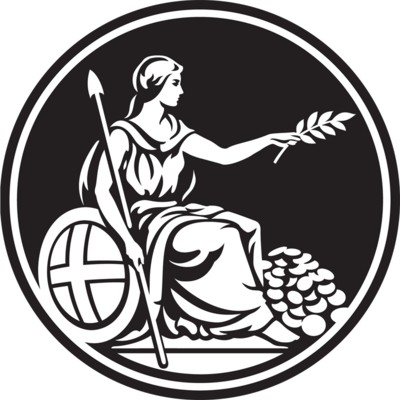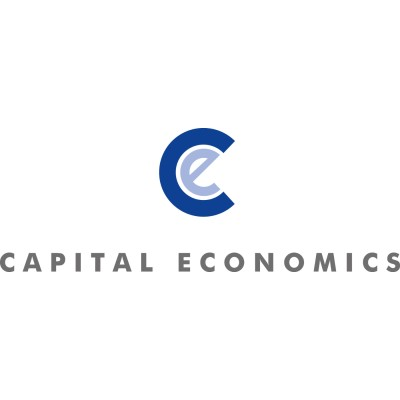The Inflation Tango: A Delicate Dance in the U.K. Economy
March 27, 2025, 3:43 am

Location: United Kingdom, Wales, Newport
Employees: 1001-5000
Founded date: 1996

Location: United Kingdom, England, London
Employees: 1001-5000
Founded date: 1694
The U.K. economy is in a precarious position, caught in the grips of inflation that refuses to settle down. Recent data reveals that inflation dipped to 2.8% in February, a slight reprieve from the 3% seen in January. But this cooling may be a mirage, a fleeting moment in a turbulent economic landscape.
The Office for National Statistics (ONS) released the figures, revealing that core inflation, which excludes volatile items like food and energy, rose to 3.5%. This is a reminder that while some prices may ease, others are still climbing. Clothing prices, particularly women's apparel, played a significant role in this month's decline. Yet, the overall picture remains cloudy.
Economists had anticipated a slightly higher inflation rate of 2.9%. The reality of 2.8% offers little comfort. It’s like a rain shower on a dry day—refreshing, but not enough to quench the thirst. The Bank of England (BoE) held interest rates steady at 4.5% last week, signaling a cautious approach amid rising global trade tensions and looming tax increases.
Chancellor Rachel Reeves is preparing to unveil her Spring Statement, a moment that could reshape the economic landscape. The government faces a budget shortfall, a consequence of rising borrowing costs. Reeves is expected to announce spending cuts, a necessary evil to balance the books. The aim is to ensure that day-to-day spending aligns with tax revenues, a tightrope walk in a changing world.
The OBR, the country’s fiscal watchdog, is expected to downgrade growth forecasts, halving previous estimates. This is a stark reminder that the economy is not on solid ground. With lower output comes higher borrowing requirements, forcing the government to tighten its fiscal belt.
The inflation data will be scrutinized closely. It’s a double-edged sword. On one hand, it may provide a glimmer of hope for consumers. On the other, it raises questions about the BoE's next moves. The central bank is wary of rising prices, especially with energy costs set to increase.
The recent dip in inflation may be short-lived. Analysts warn that inflation could rise again, potentially reaching 3.5% by September. This is not just a number; it’s a signal of economic strain. The risk of wage spillovers looms large, complicating the BoE's decision-making process.
The government’s priority is clear: kickstart growth and stabilize the economy. The Chief Secretary to the Treasury emphasized the need to protect working people's finances. Freezing fuel duty and increasing the national living wage are steps in this direction. Yet, these measures may not be enough to counteract the pressures of rising costs.
Higher transport and communication costs continue to push inflation above the BoE's target. The Monetary Policy Committee (MPC) is feeling the heat. They are acutely aware of the potential for inflation to spike again, driven by tax increases and external pressures.
The specter of tariffs looms large. The U.S. has announced tariffs on aluminum and steel, set to take effect soon. This could rattle businesses and lead to higher prices for consumers. The interconnectedness of global trade means that local economies are often at the mercy of international decisions.
The ONS has faced scrutiny over its data handling. Recent reports revealed that sample sizes for some estimates were alarmingly low. This raises questions about the reliability of the data that informs economic policy. The public deserves transparency and accuracy, especially in times of economic uncertainty.
Inflation has been a rollercoaster ride for the U.K. It peaked at 11.1% in October 2022, a staggering figure that sent shockwaves through the economy. Since then, it has steadily fallen, but the journey is far from over. The current rate of 2.8% is still above the BoE's target of 2%.
The path ahead is fraught with challenges. The BoE's cautious stance reflects the delicate balance they must maintain. They cannot afford to act hastily, yet they must respond to the realities of rising prices. The economic landscape is shifting, and the stakes are high.
As Chancellor Reeves prepares to address Parliament, the nation holds its breath. Her decisions will have far-reaching implications. The Spring Statement is not just a fiscal update; it’s a roadmap for the future. The government must navigate these turbulent waters with care, ensuring that growth is not sacrificed on the altar of austerity.
In conclusion, the U.K. economy is at a crossroads. Inflation may have dipped, but the underlying issues remain. The dance of economic policy is intricate, requiring finesse and foresight. As the government and the BoE grapple with these challenges, the hope is for a stable and prosperous future. But for now, the inflation tango continues, and the music is far from over.
The Office for National Statistics (ONS) released the figures, revealing that core inflation, which excludes volatile items like food and energy, rose to 3.5%. This is a reminder that while some prices may ease, others are still climbing. Clothing prices, particularly women's apparel, played a significant role in this month's decline. Yet, the overall picture remains cloudy.
Economists had anticipated a slightly higher inflation rate of 2.9%. The reality of 2.8% offers little comfort. It’s like a rain shower on a dry day—refreshing, but not enough to quench the thirst. The Bank of England (BoE) held interest rates steady at 4.5% last week, signaling a cautious approach amid rising global trade tensions and looming tax increases.
Chancellor Rachel Reeves is preparing to unveil her Spring Statement, a moment that could reshape the economic landscape. The government faces a budget shortfall, a consequence of rising borrowing costs. Reeves is expected to announce spending cuts, a necessary evil to balance the books. The aim is to ensure that day-to-day spending aligns with tax revenues, a tightrope walk in a changing world.
The OBR, the country’s fiscal watchdog, is expected to downgrade growth forecasts, halving previous estimates. This is a stark reminder that the economy is not on solid ground. With lower output comes higher borrowing requirements, forcing the government to tighten its fiscal belt.
The inflation data will be scrutinized closely. It’s a double-edged sword. On one hand, it may provide a glimmer of hope for consumers. On the other, it raises questions about the BoE's next moves. The central bank is wary of rising prices, especially with energy costs set to increase.
The recent dip in inflation may be short-lived. Analysts warn that inflation could rise again, potentially reaching 3.5% by September. This is not just a number; it’s a signal of economic strain. The risk of wage spillovers looms large, complicating the BoE's decision-making process.
The government’s priority is clear: kickstart growth and stabilize the economy. The Chief Secretary to the Treasury emphasized the need to protect working people's finances. Freezing fuel duty and increasing the national living wage are steps in this direction. Yet, these measures may not be enough to counteract the pressures of rising costs.
Higher transport and communication costs continue to push inflation above the BoE's target. The Monetary Policy Committee (MPC) is feeling the heat. They are acutely aware of the potential for inflation to spike again, driven by tax increases and external pressures.
The specter of tariffs looms large. The U.S. has announced tariffs on aluminum and steel, set to take effect soon. This could rattle businesses and lead to higher prices for consumers. The interconnectedness of global trade means that local economies are often at the mercy of international decisions.
The ONS has faced scrutiny over its data handling. Recent reports revealed that sample sizes for some estimates were alarmingly low. This raises questions about the reliability of the data that informs economic policy. The public deserves transparency and accuracy, especially in times of economic uncertainty.
Inflation has been a rollercoaster ride for the U.K. It peaked at 11.1% in October 2022, a staggering figure that sent shockwaves through the economy. Since then, it has steadily fallen, but the journey is far from over. The current rate of 2.8% is still above the BoE's target of 2%.
The path ahead is fraught with challenges. The BoE's cautious stance reflects the delicate balance they must maintain. They cannot afford to act hastily, yet they must respond to the realities of rising prices. The economic landscape is shifting, and the stakes are high.
As Chancellor Reeves prepares to address Parliament, the nation holds its breath. Her decisions will have far-reaching implications. The Spring Statement is not just a fiscal update; it’s a roadmap for the future. The government must navigate these turbulent waters with care, ensuring that growth is not sacrificed on the altar of austerity.
In conclusion, the U.K. economy is at a crossroads. Inflation may have dipped, but the underlying issues remain. The dance of economic policy is intricate, requiring finesse and foresight. As the government and the BoE grapple with these challenges, the hope is for a stable and prosperous future. But for now, the inflation tango continues, and the music is far from over.
